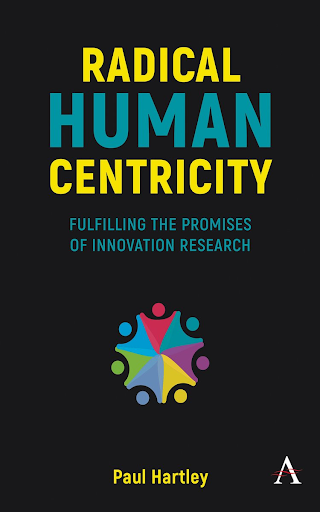Radical Human Centricity By Paul Hartley Re-Examines Innovation By Blending Business And Anthropology

There is a growing consensus that market research is fundamentally broken, or at least majorly flawed. Many people are waking up to the idea that it's not able to actually deliver on its claims. Interventions like design thinking, while well-meaning and highly organized, have not fulfilled their potential either.
The world of commercial research is struggling to fill the knowledge needs of most organizations, and the solution is to gain a more in-depth understanding of people, allowing researchers to more accurately ascertain their sentiments.
Stepping in to bridge this gap is Paul Hartley, PhD – an anthropologist, business researcher, and author of Radical Human Centricity. In his work, Hartley reframes the conversation by examining the current state of market research, design thinking, and innovation, highlighting their pitfalls and proposing solutions based on sound anthropological research.
The first part of the book critiques and reassesses the state of commercial innovation research from an anthropological perspective, using Hartley's many years of innovation research consulting and anthropological scholarship. It illustrates how contemporary commercial research, including market research and various research approaches in design thinking and human-centered design, have failed, partly because the research tools used are not fit for purpose. These are supported by ethnographic examples from Hartley's work as an innovation researcher and consultant. He says that his goal is to help recraft innovation research into something more capable of dealing with humanity's pressing issues like applied AI, climate change, and various large and small business problems.
After identifying the key problems, Hartley uses the book's second part to provide solutions on how to elevate commercial research, allowing practitioners to realize the unfulfilled promises of design thinking and human-centered design. The book's title, Radical Human Centricity, is also the name he gives to the set of practices and approaches needed to help design thinking and commercial research achieve their full potential.
The book is targeted at two reader demographics: the first is those who work in the innovation and market research space. It is organized as a way for them to identify the problems in their industry and provide solutions to the challenges they face. It can also serve as a manual or textbook for innovation researchers and students in design programs, business schools, and newly formed commercial anthropology programs.
According to Hartley, the book was written to straddle the boundary between the trade and academic spheres. This allows the more general reader to avoid being burdened by rigorous, academic underpinnings, and academic readers will also be able to engage with it as a work within the discourse of design anthropology, design research, design thinking, and business practices. One unique feature of Radical Human Centricity is that it is a business book that's also been peer-reviewed within a social science context.
"Right now, anthropology is gaining importance in the innovation world. After fifteen years of experimenting with design thinking and design research, people are realizing that these research practices are not fulfilling their promises." Hartley says. "This book is a window into the methods and techniques necessary to fulfill the promises of human-centric business research and innovation consulting. It is also the first attempt to identify this problem completely and provide a solution. My intention is to make Radical Human Centricity one of the key themes of the overhaul of innovation research. I also aim to help the industry realize that organizations that apply more human-centric approaches to commercial research are more likely to achieve better business outcomes."
© Copyright IBTimes 2024. All rights reserved.





















